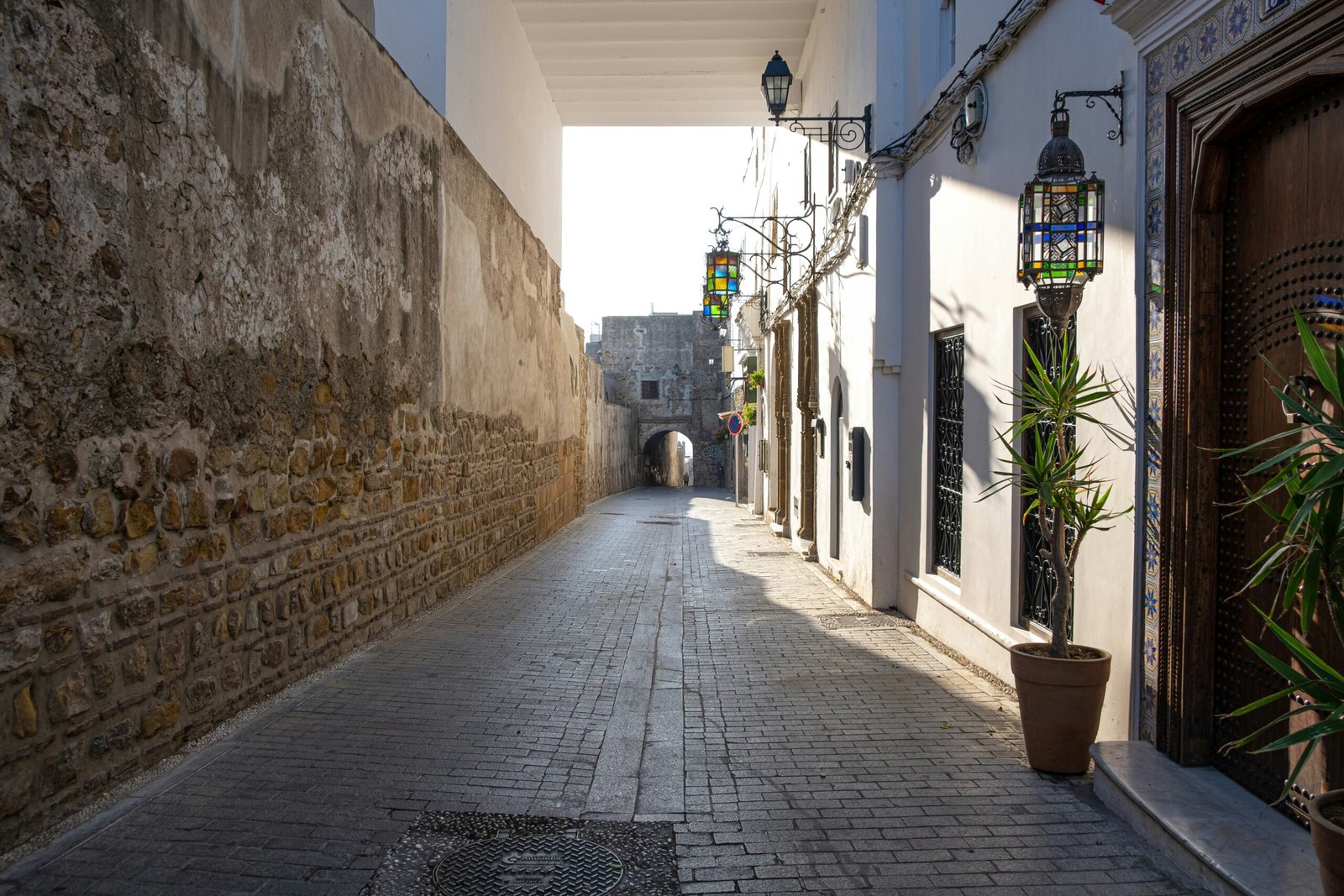

Introduction to Slow Travel
Slow travel is an emerging concept that emphasizes immersive experiences beyond the hurried pace of traditional tourism. Its roots can be traced back to the Slow Food movement, founded in Italy during the late 1980s, which advocated for a slower, more thoughtful approach to consuming food and appreciating culture. Slow travel extends this philosophy to the act of traveling itself, promoting a more deliberate and enriching way of experiencing the world.
Diverging from conventional tourism, which often involves ticking off a checklist of popular attractions, slow travel prioritizes quality over quantity. The emphasis is on spending extended periods in one location, thus enabling deeper cultural exchanges and authentic interactions. Instead of fleeting visits to must-see sites, slow travelers immerse themselves in the local lifestyle, gaining a profound understanding of customs, traditions, and everyday life.
The philosophy behind slow travel centers on the idea that traveling should be a journey of discovery and personal growth. Taking the time to truly experience a place means going beyond the surface and engaging with its people, history, and environment. This often involves staying in locally-owned accommodations, eating at local restaurants, and participating in community events. By doing so, travelers support the local economy and contribute to the preservation of cultural heritage.
Several key figures and movements have been instrumental in popularizing slow travel. Among them, Carl Honoré, author of “In Praise of Slow,” has been a major proponent, advocating for a multi-faceted slow movement that includes travel. Additionally, organizations like the Slow Travel Europe and networks such as Workaway and WWOOFing, which connect travelers with opportunities to volunteer in exchange for accommodation, have helped bring slow travel into the mainstream consciousness.
Ultimately, slow travel is about transforming the way we explore the world. It encourages travelers to go beyond the tourist trail, fostering meaningful connections and ensuring that each journey leaves a lasting, enriching impact on both the traveler and the destination.
Benefits of Slow Travel
Slow travel presents an impressive array of advantages over the traditional, fast-paced tourism. One of the primary benefits is its reduced environmental impact. By staying longer in one destination, travelers minimize their carbon footprint associated with frequent flights, car rentals, and other transportation methods typically used in fast travel. This conscientious approach aligns with sustainable tourism practices, contributing to the preservation of natural and cultural resources.
The opportunity for deeper cultural immersion stands as a hallmark benefit of slow travel. By spending extended periods in one place, travelers can form genuine connections with the local community, understand various cultural nuances, and partake in local traditions and customs. This immersive experience fosters a profound appreciation for the local culture, often inaccessible through conventional travel itineraries.
Another significant advantage is the positive impact on local economies. Slow travelers are more likely to support local businesses, artisans, and service providers, as they often stay in locally-owned accommodations, dine at neighborhood eateries, and purchase handmade souvenirs. This mode of travel helps to circulate money within the community, fueling local economic growth and offering a more equitable form of tourism.
On a personal level, slow travel facilitates mindfulness and self-reflection. The leisurely pace allows travelers to fully engage with their surroundings, encouraging a mindful appreciation of every experience. This can lead to enhanced mental well-being and an enriched travel experience, as the focus shifts from merely ticking off tourist attractions to embracing the holistic journey.
Lastly, the development of meaningful relationships with locals can profoundly impact a traveler’s perspective. Engaging with residents on a personal level offers unique insights and stories, making the experience memorable and deeply rewarding. These relationships, often formed over shared meals or community events, embody the essence of slow travel, highlighting the human connections that elevate the travel experience from ordinary to extraordinary.
Planning Your Slow Travel Journey
Embarking on a slow travel adventure requires a thoughtful approach to planning, aiming to cultivate deeper connections with your destinations. Begin by choosing locales that resonate with you on a personal or cultural level. Research destinations that offer rich, local experiences and are conducive to longer stays. This allows you not only to explore widely but also to appreciate the subtle nuances of your chosen location.
The importance of longer stays cannot be overstated in slow travel. By extending your visit, you allow yourself the time to move beyond the initial, often superficial tourist interactions and integrate more fully into the local rhythms. This extended interaction fosters a sense of connection and understanding that fleeting visits simply cannot achieve. Aim to stay in one place for at least a few weeks, if not months, to truly appreciate its essence.
To integrate into local communities effectively, immerse yourself in local events, engage in daily routines, and interact with residents. Learn basic phrases in the local language, shop at neighborhood markets, and frequent local cafes or eateries. These actions will help build meaningful relationships and increase your understanding of local customs and lifestyles.
Finding the right accommodations is crucial for an immersive experience. Opt for homestays, locally-owned guesthouses, or long-term rentals. These types of lodgings not only provide comfort but also afford the opportunity to interact closely with locals, gaining insights and experiences that hotels may not offer. Websites and platforms that specialize in connecting travelers with local hosts can be invaluable resources in your search.
As you plan your slow travel journey, focus on sustainable tourism practices. Respect the environment, support local businesses, and strive to leave a positive impact on the communities you visit. By embracing the principles of slow travel, you contribute to preserving the cultural and environmental integrity of your destination, ensuring that it remains vibrant for future travelers.
Experiencing Local Culture
Engaging with local culture is a cornerstone of slow travel, offering travelers a profound connection to their surroundings beyond the superficial tourist trail. By immersing oneself in the cultural fabric of a destination, one can gain a more authentic and enriching experience. This approach not only enhances personal growth and understanding but also fosters respect and appreciation for diverse societies.
One significant way to experience local culture is by learning the local language. Mastering even a few basic phrases can transform interactions, enabling deeper communication and building rapport with local residents. Language learning can be complemented by participating in traditional festivals, which offer vibrant displays of local customs, music, dance, and crafts. These festivities expose travelers to the rich and dynamic heritage of the area, providing a sense of historical and contemporary cultural dynamics.
Attending local workshops or classes is another valuable avenue for cultural immersion. These sessions may cover a wide range of subjects, from culinary arts and traditional craftsmanship to local history and agriculture. Such hands-on experiences offer invaluable insights into daily life and community values, allowing travelers to craft meaningful memories aligned with the ethos of slow travel.
Understanding and respecting local customs and traditions are equally crucial. Awareness of social norms, religious practices, and traditional etiquette helps avoid inadvertent cultural insensitivity. Demonstrating respect, whether by dressing appropriately, observing local dining manners, or participating thoughtfully in religious ceremonies, underscores a traveler’s commitment to genuine cultural engagement.
Overall, the integration of these activities into a travel itinerary encourages a more thoughtful and meaningful exploration of a destination. Embracing local culture not only enhances the travel experience but also contributes positively to cultural preservation and mutual respect between travelers and host communities.
Gastronomic Adventures
One of the core tenets of slow travel is immersing oneself in the local culture, and few avenues offer a more tantalizing gateway than the region’s cuisine. Food holds the stories of a place, woven into centuries of traditions, community practices, and local flavors. For slow travelers, embracing gastronomic adventures means delving into those stories, savoring every bite, and understanding the very essence of the locale.
A meaningful way to start one’s culinary journey is by visiting local markets. These bustling hubs brim with fresh produce, artisanal products, and residents going about their daily routines, offering a first-hand glimpse into the area’s way of life. Sampling seasonal fruits, discovering unfamiliar spices, and interacting with vendors can provide an invaluable connection to the culture.
Dining at family-owned restaurants offers another layer of authenticity. Unlike larger, commercial establishments, these eateries often prioritize tradition over trend, serving recipes passed down through generations. Eager to share the history and ingredients behind each dish, the proprietors offer an unparalleled inside perspective, enriching your culinary experience.
A further step towards culinary immersion can be achieved by taking local cooking classes. These classes often extend beyond just the preparation of meals; they include visits to markets, tips on ingredient selection, and the cultural importance of specific cooking techniques. It is an opportunity to learn from the masters themselves, ensuring these recipes are not just tasted but also cherished and remembered long after the journey ends.
Staple dishes and regional specialties are paramount during any gastronomic adventure. Each dish carries historical significance and varying methods of preparation, influenced by local climates and available resources. Embrace the opportunity to try everything from street food delicacies to meticulously prepared gourmet dishes.
By prioritizing gastronomic experiences in slow travel, one acquires a profound understanding of a culture’s identity, the landscape’s bounty, and the community’s spirit, ensuring memories far more savory and lasting than any standard tourist experience could offer.
Slow Travel and Sustainability
Slow travel embodies the principles of sustainable tourism by promoting mindful exploration and deeper connections with local cultures and environments. One of its core tenets is minimizing the carbon footprint associated with travel. This can be achieved by opting for transportation methods with lower emissions, such as trains or buses instead of flights. Traveling overland not only reduces carbon output but also offers the opportunity to experience landscapes and communities that are often bypassed in air travel.
Supporting local economies is another fundamental aspect of slow travel. By spending more time in fewer places, travelers can engage more fully with local businesses, artisans, and markets, thereby contributing directly to the community’s economic wellbeing. This approach ensures that the money spent by tourists benefits local residents rather than multinational corporations. Choosing locally-owned accommodations, restaurants, and tour operators further amplifies this positive impact.
Environmentally responsible activities also play a crucial role in sustainable travel. Slow travelers often seek out experiences that promote conservation and respect for natural habitats. Activities such as wildlife watching, hiking, and visiting protected areas should be conducted with care to avoid disturbing ecosystems. Participation in eco-friendly tours and supporting conservation projects can aid in preserving the pristine beauty of travel destinations.
Reducing waste is a practical and necessary component of slow travel. Travelers can make conscious choices to cut down on single-use plastics by carrying reusable water bottles, bags, and utensils. Staying in eco-friendly accommodations that prioritize sustainable practices like recycling, energy efficiency, and waste reduction further supports this goal. Avoiding the use of disposable items and being mindful of one’s environmental impact helps to maintain the integrity of the places visited.
Ultimately, the ethos of slow travel dovetails perfectly with the aspirations of sustainable tourism. It encourages a deliberate pace and thoughtful choices that prioritize the wellbeing of the environment and local communities. Through responsible habits and the embracing of greener alternatives, slow travel contributes to the preservation and enrichment of destinations for future generations.
Challenges and Solutions
The practice of slow travel, while rewarding in its depth of experience, is not without its challenges. Common hurdles include visa limitations, language barriers, and financial constraints. These obstacles, however, can be effectively managed with informed preparation and strategic planning.
Visa limitations are one of the prominent issues slow travelers face. Many countries have strict regulations regarding the duration of stay for tourists, which can disrupt plans for an extended immersion. To address this, it’s crucial to understand the visa requirements of your chosen destination well in advance. Investigate whether tourist visas can be extended or if there are alternative visas available, such as those for students, remote workers, or volunteers. Additionally, consider destinations that offer longer tourist visas or visa waivers, facilitating a more relaxed travel experience.
Language barriers can also impede the seamless integration into a new environment, affecting communication and daily activities. However, this challenge can be mitigated through various language learning resources. Mobile apps, online courses, and local language schools provide accessible platforms for acquiring basic conversational skills. Moreover, engaging with the local community, participating in language exchange meetups, and practicing regularly can significantly improve one’s proficiency, thereby enhancing the immersive travel experience.
Financial constraints are another significant consideration for slow travelers. Unlike brief vacations, extended travel necessitates careful budget planning to ensure sustainability. Begin by researching the cost of living in your destination to create a realistic budget. Taking advantage of affordable accommodation options such as hostels, guesthouses, and homestays can help cut costs. Additionally, cooking meals, utilizing public transport, and seeking out free or low-cost activities are practical ways to manage expenses.
Embracing a slow travel lifestyle also requires adapting to a slower pace and integrating into new environments. This psychological adaptation involves patience and an open mindset. Allowing yourself time to acclimate, engaging with local traditions, and maintaining a flexible itinerary can foster a deeper connection with the place and its people, ultimately enriching the travel experience.
Case Studies and Personal Stories
Slow travel, an approach that emphasizes savoring experiences over ticking off tourist highlights, has made a transformative impact on many travelers. One compelling case study involves Emma, a freelance writer who opted for a month-long stay in a rural village in Tuscany, Italy. Rather than skimming through popular tourist spots, she immersed herself in the local community. Emma spent her days learning traditional Tuscan cooking from the elderly women in the village, participating in grape harvesting, and even volunteering at a local farm. Her slow travel experience not only deepened her appreciation for Italian culture but also forged lifelong friendships and taught her invaluable self-sufficiency skills.
Similarly, John and Lisa, a retired couple, chose to explore Southeast Asia at a leisurely pace rather than rushing from one destination to another. Their itinerary involved long stays in multiple small towns across Thailand, Vietnam, and Cambodia. They made authentic connections by learning the local languages, participating in community festivals, and engaging in local customs. The couple documented their interactions with host families who welcomed them into their homes, offering not just shelter but a profound sense of belonging. This experience significantly enriched their understanding of the region’s cultures and left a lasting impact on their worldview.
A particularly poignant personal story comes from Lucy, a young professional who decided to take a career break to travel slowly through South America. Her journey was as much about self-discovery as it was about exploration. By staying in each location for several weeks, Lucy participated in numerous community projects, including building schools in Peru and working on conservation efforts in the Amazon. These experiences provided her with a sense of purpose and enhanced her professional skills, making her career break an enlightening chapter of her life.
These compelling slow travel stories highlight the myriad ways individuals have enriched their lives by choosing depth over breadth. The unique experiences and lessons learned emphasize that slow travel is not just about the journey itself, but about forging meaningful connections that reshape our perspectives.




